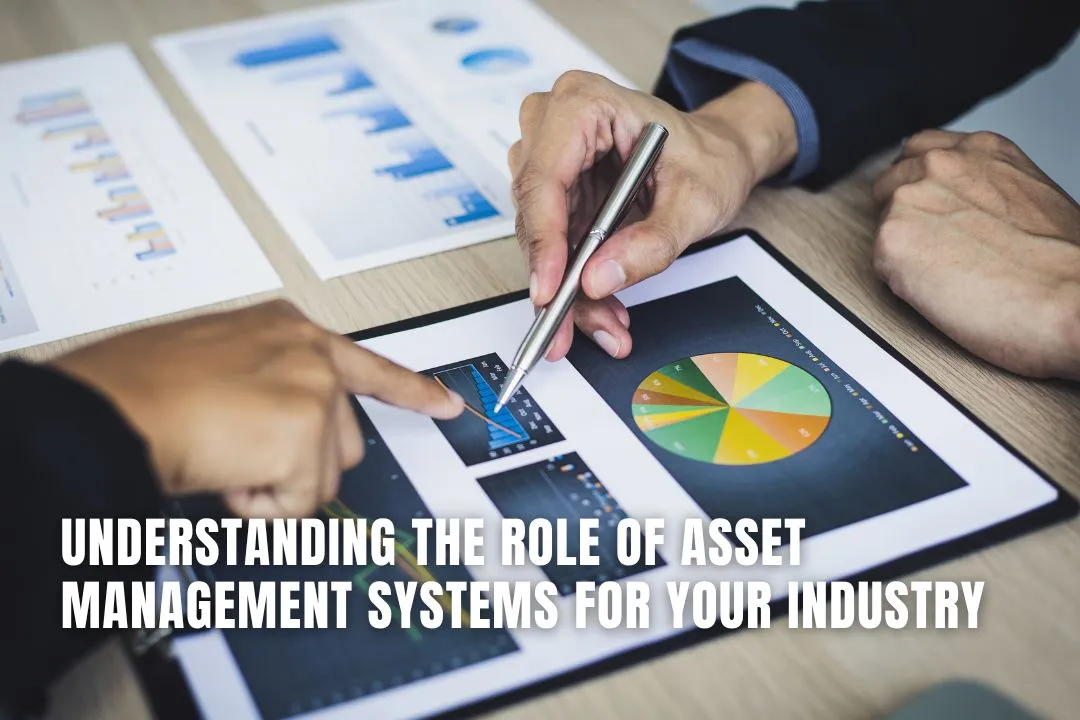
Pretty much every business you can imagine has some kind of assets. Some are obvious (like equipment, machinery, or a fleet of vehicles) while others are less visible, such as software licences, sensitive data, or intellectual property.
But the asset list doesn’t stop there. Think about everything from buildings and land parcels to IT infrastructure, utilities, vehicles, tools, and even things like furniture and fixtures. Whether it’s the servers humming in your back room or the parcel of land your new office sits on, all of these count as assets that need to be tracked and managed.
Regardless of what they look like, the basic requirement is the same: you’ve got to keep track of them, know where they are, and ensure they're being cared for effectively.
That’s where asset management systems enter the picture. They’re not just digital filing cabinets - done correctly, they can become an operational backbone, supporting everything from regulatory compliance to productivity. Let's delve a little deeper.
Let’s unpack the jargon. Enterprise Asset Management (EAM) software is a toolkit designed to help organisations keep tabs on just about everything they own, from laptops and machinery to entire buildings. Think of it as the Swiss army knife for asset oversight.
But EAM software doesn’t just tell you where things are. It’s built to coordinate:
In short, EAM software acts as a central hub, connecting people, processes, and information so nothing slips through the cracks. Whether you're overseeing a public utility, a manufacturing plant, or a university campus, a well-implemented EAM system can boost efficiency, cut costs, and reduce operational surprises.
Investing in asset management software means gaining control, reducing costs, optimizing lifecycles, and making smarter choices, all while keeping assets secure and compliant.
Let’s say a laptop goes missing, or a delivery van in your fleet isn’t where it should be. Without a clear asset tracking system in place, you’re stuck chasing up emails, searching through logs (if they exist), or spreadsheets that are probably outdated. With asset management solutions from places like Traka, you can get a real-time snapshot of what’s in use, what’s idle, and what’s overdue for maintenance.
That kind of visibility isn’t just useful, it’s often essential, especially in sectors like construction, healthcare, or logistics, where downtime can cost serious money.
Assets have life cycles - machines wear out, licences will expire, and parts in vehicles will need replacing. An effective system doesn’t just log what you own, it also tracks the health, value, and condition of each item over time.
This means fewer last-minute scrambles, fewer unexpected costs, and more control in general over planning. You shouldn’t be reacting, you should be proactive in your management
Physical and digital security tend to go hand in hand. When you know who it was that last checked out a vehicle, or which laptop contains a lot of sensitive data, you reduce the probability of breaches, both accidental and intentional.
Better yet, most of these kinds of systems don’t require too much manual input. Scans, QR codes, and integrations with your other platforms help automate the whole process. Fewer admin headaches, and increased peace of mind.
The term “asset” means different things depending on your industry. A marketing agency might focus on digital devices and software, but a manufacturing plant? Here, the concern will be more focused on machinery uptime and replacement cycles. Asset management software is built to assist these specific pain points.
Whether you need help with regulatory compliance, internal audits, or just keeping your inventory list from spiralling out of control, these systems are built to adapt. As with any seismic shift, once they’re in place, teams often wonder how they managed without them.
Introducing any new system can feel daunting, especially if you’re dealing with government-level regulation, compliance, and teams with diverse technical abilities. The good news? Asset management software providers know this, and support isn’t an afterthought.
You’ll typically find a package of resources designed to help teams get up to speed and keep things running smoothly. Here’s what you can expect:
If you’re working with suppliers like Traka or other major players, implementation support is often a standard part of the package. That way, you’re not just handed the keys and left to figure out the dashboard; there’s someone on hand to help kick off, and you’ve got a lifeline if anything gets stuck later on.
Pricing for government asset management software isn’t a one-size-fits-all equation, it depends on a few key things. The overall cost will vary based on:
Most providers offer a mix of payment models: subscription (monthly or annual), perpetual licenses (a larger up-front cost with ongoing maintenance), or sometimes pay-as-you-go.
In short, expect to see everything from a few hundred pounds per month for basic plans to enterprise-level solutions that run into the thousands. If you’re looking for specifics, it’s best to put together a shortlist of suppliers like Traka or Asset Panda, describe your requirements, and get tailored quotes.
Ultimately, asset management isn’t there to help with watching things for the sake of it - the main function is for making better decisions. When you have reliable data, you can identify trends, and often avoid waste. You can also use it to justify budgets, prove ROI, and prevent losses before they occur. And in a competitive market, that kind of insight isn’t a luxury. It’s a strategic advantage.